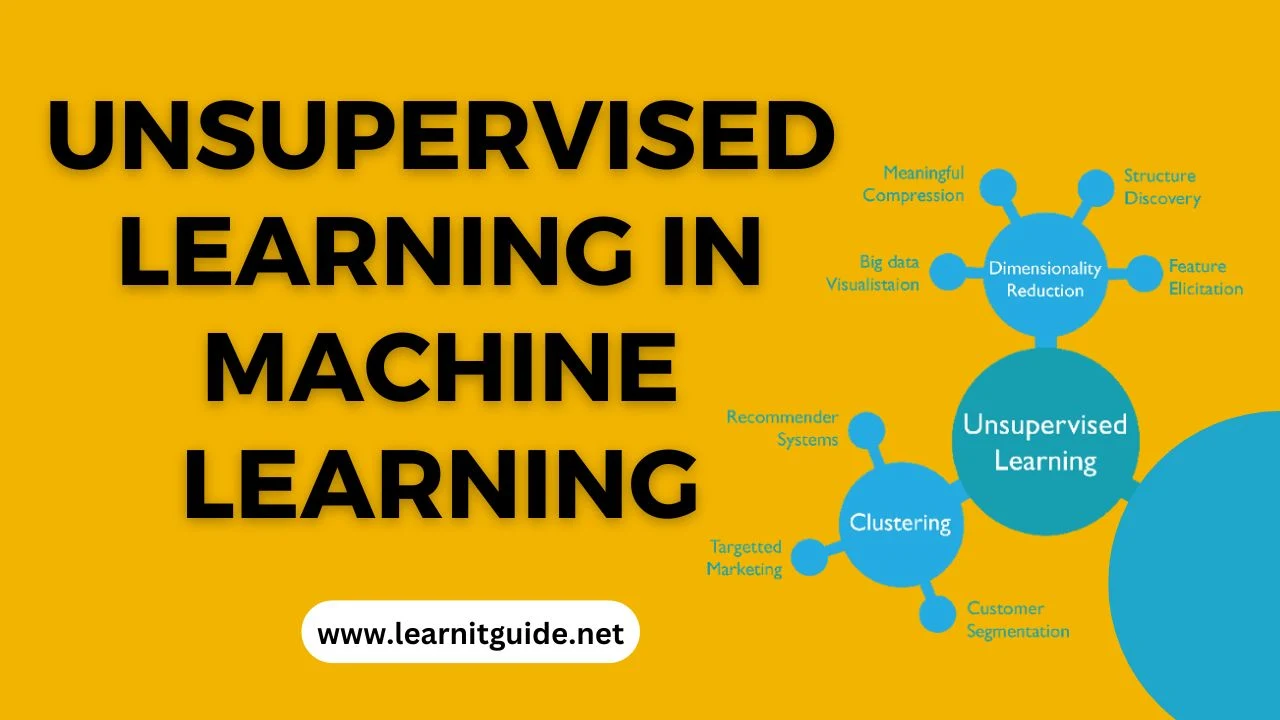This post will help you to understand about Unsupervised Learning in Machine Learning.
If you are interested in learning, Request you to go through the below recommended tutorial.
DevOps Full Course Tutorial for Beginners - DevOps Free Training Online
Docker Full Course Tutorial for Beginners - Docker Free Training Online
Kubernetes Full Course Tutorial for Beginners - Kubernetes Free Training Online
Ansible Full Course Tutorial for Beginners - Ansible Free Training Online
Openstack Full Course Tutorial for Beginners - Openstack Free Training Online
Unsupervised Learning in Machine Learning
Unsupervised learning is a type of machine learning where the algorithm is trained on a dataset without any supervision. Unlike supervised learning, unsupervised learning algorithms do not have access to a labeled dataset, and must find patterns and relationships in the data on their own. Unsupervised learning is an important area of machine learning and has many applications, such as clustering, anomaly detection, and dimensionality reduction.
In this post, we will discuss unsupervised learning in machine learning in more detail, including its definition, types, applications, and challenges.
What is Unsupervised Learning?
Unsupervised learning is a type of machine learning where the goal is to find patterns or relationships in data without any prior knowledge. This means that the algorithm is given a dataset and must identify patterns and relationships on its own. The goal of unsupervised learning is to discover structure in the data that can be used for other tasks, such as clustering or classification.
Types of Unsupervised Learning
There are two main types of unsupervised learning: clustering and dimensionality reduction.
Clustering
Clustering is the process of grouping similar data points together. Clustering algorithms can be used to identify patterns in the data, such as customer segments or types of products. There are many different clustering algorithms, including k-means, hierarchical clustering, and DBSCAN.
Dimensionality Reduction
Dimensionality reduction is the process of reducing the number of features in a dataset. This can be useful when working with high-dimensional data, where the number of features is much greater than the number of data points. Dimensionality reduction algorithms can be used to identify the most important features in the data, and can also help to reduce noise and improve the accuracy of other algorithms. Examples of dimensionality reduction algorithms include principal component analysis (PCA) and t-distributed stochastic neighbor embedding (t-SNE).
Applications of Unsupervised Learning
Unsupervised learning has many applications in a variety of industries, including healthcare, finance, and marketing. Some of the most common applications of unsupervised learning include:
Clustering:
Unsupervised learning algorithms can be used to identify customer segments, such as groups of customers who share similar preferences or behavior patterns. This information can be used to develop targeted marketing campaigns or to improve customer satisfaction.
Anomaly detection:
Unsupervised learning algorithms can also be used to identify anomalies in data, such as fraudulent transactions or equipment failures. This can help to improve safety and prevent losses.
Dimensionality reduction:
Dimensionality reduction algorithms can be used to improve the performance of other machine learning algorithms by reducing the number of features in the dataset. This can help to reduce noise and improve accuracy.
Challenges of Unsupervised Learning
Unsupervised learning is a challenging area of machine learning because there is no ground truth or objective function to optimize. This means that it can be difficult to evaluate the performance of unsupervised learning algorithms, and there is no clear metric for success. Additionally, unsupervised learning algorithms can be sensitive to the initialization of the algorithm and the choice of hyperparameters. This can make it difficult to obtain consistent results across different datasets.
Conclusion
Unsupervised learning is an important area of machine learning that has many applications in a variety of industries. Clustering and dimensionality reduction are two common types of unsupervised learning, and can be used to identify patterns and relationships in data. However, unsupervised learning is also a challenging area of machine learning, and can be difficult to evaluate and optimize. Despite these challenges, unsupervised learning is an important area of research that is likely to play an increasingly important role in the development of advanced machine learning algorithms in the future.
That’s it for this post, Hope you have got an idea about Unsupervised Learning in Machine Learning.








0 Comments